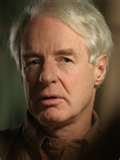We’re coming upon our 65th installment of “Why’s this so good?” – in which notable journalists dissect their favorite pieces of narrative journalism. Our contributors have included Adam Hochschild, Jennifer B. McDonald, Eli Sanders, Megan Garber, Wesley Morris, Ann Friedman, Chris Jones and Ben Yagoda, and covered Joan Didion, Calvin Trillin, Michael Paterniti, Nora Ephron, John Jeremiah Sullivan, Roy Blount Jr., David Foster Wallace, Michael Lewis and dozens more. The series has highlighted classics of print, plus a little public radio, and we’ve got other narrative forms scheduled. Here are excerpts of the top five most popular pieces so far:
 “Why’s this so good?” No. 35: Malcolm Gladwell on ketchup, by Tim Carmody
“Why’s this so good?” No. 35: Malcolm Gladwell on ketchup, by Tim Carmody
Malcolm Gladwell does so many things well as a feature writer that it’s embarrassing to mention them all. I’ll list a few of them anyway:
Malcolm Gladwell is astonishingly quotable. He writes graceful, intelligent sentences. But he’s also something better than quotable; he’s paraphrasable and anecdotable. He gives you words, ideas and stories drawn from ordinary life that you can recall and retell, and which also seem relevant to a huge range of conversations with unusually broad intellectual consequences. His language becomes portable in order to replicate itself.
Malcolm Gladwell is a master of misdirection and the slow play. He bluffs, demurs, head fakes and suddenly raises the stakes. His stories have threads that weave in and out, and he can fool you as to which thread is the “A” and which is the “B” story. He can fool you about his thesis, and even more astonishingly, he can fool you about whether or not he actually has one – in either direction.
Malcolm Gladwell is known, for better or worse, for books, stories, and essays that identify something counterintuitive. At first you think it’s like this, but really it’s like that. But his best feature writing, again, is better than that. Even as illustrative chunks fall out of them, the essays as a whole don’t come with easy, business-retreat-ready takeaways. They’re neither intuitive nor counterintuitive, but engage in acts of intuition, a playful oscillation between irreconcilable poles. They clarify your perceptions by revealing the inadequacy of your concepts. They are intelligence-games.
 “Why’s this so good?” No. 34: Buzz Bissinger trails a fabulist, by Deborah Blum
“Why’s this so good?” No. 34: Buzz Bissinger trails a fabulist, by Deborah Blum
As Bissinger writes, Stephen Glass, an aspiring writer from the wealthy Chicago suburb of Highland Park, was far from the first journalist to invent a story. Perhaps the previous best-known case is that of Janet Cooke, a one-time Washington Post reporter, who was stripped of her 1980 Pulitzer Prize after it was learned that she’d made up an 8-year-old heroin addict. Reportorial history is scattered with other examples – but no one on the scale of Glass, who wrote 31 stories for The New Republic, of which 27 were at least partly fiction and some entirely so. Or as Bissinger puts it:
In that context, it’s probably not surprising that Stephen Glass and his family chose not to talk with Bissinger. A story centered on a wholly uncooperative source presents a storyteller with a distinct challenge. The writer Gay Talese famously overcame this through brilliantly detailed observation of his uncooperative subject in the piece “Frank Sinatra Has a Cold.” Bissinger obviously doesn’t have that option here; Glass’s “crimes” are long past when he approaches the story and Glass himself is in hiding.
He decides instead to focus on another character in the drama, that of Chuck Lane, the New Republic magazine editor who stumbles slowly, reluctantly – and even painfully – into a realization of the problem.
 “Why’s this so good?” No. 64: David Grann and Sherlock Holmes, by Justin Ellis
“Why’s this so good?” No. 64: David Grann and Sherlock Holmes, by Justin Ellis
A chateau! A curse! Deception and a Russian princess! And Grann’s just getting started. He’s clearly in the process of spooling up the thread to lay out the stakes of the story. Once the prized documents take a turn for Christie’s auction house the Sherlockian scholar grows more desperate and paranoid. The paragraphs race forward, the pace quickens, each sentence becomes so compressed and descriptive you feel like you can’t breathe. (In a good way, of course.) You’re worried about Green and what will happen to Conan Doyle’s archive. And then, just after you’ve gotten 1,000 words deep into the mystery, the body shows up. Boom. ...
As Grann begins his inquiry we’re introduced to a cast of family, friends, and spurned colleagues. Each has their own theories and supporting evidence. And you begin to see why Grann got behind the wheel, and why describing these people and places is so important. By sitting them down in their own voice and space, they gain a little more gravity, or at least legitimacy, for us as the reader. It’s also the way Grann can employ another literary trick, where each character provides a new clue to advance the story:
Like any good mystery, things seem to become clearer, and yet murkier at the same time. We think we’re on track to finding Green’s true killer and saving Conan Doyle’s archives. But that’s not exactly the case. Just like in any detective story, or any episode of Law & Order, in the second act the hero has to re-examine the facts of the case. And when Green does, we begin to see that this is a study in obsession, not just an unsolved murder.
 “Why’s this so good?” No. 39: Gay Talese diagnoses Frank Sinatra, by Maria Henson
“Why’s this so good?” No. 39: Gay Talese diagnoses Frank Sinatra, by Maria Henson
Talese’s gift for observing detail gives us immediate, vivid imagery that put us right there in the room with Sinatra. The tension is palpable as Talese recounts the poolroom scene in which one of “coolest” in the bar, writer Harlan Ellison, drew Sinatra’s ire for wearing Game Warden boots, “for which he had recently paid $60.” Talese has Sinatra gazing at those boots, turning away, focusing on them again and then firing questions at Ellison about the provenance of the boots. “I don’t like the way you’re dressed,” he tells Ellison. Throughout the slowly evolving, hostile scene, Talese conveys the precise action in the background − from the man who was bent low with his cue stick and then froze, to the “hard tap of Sinatra’s shoes” as the singer made his way with a “slow, arrogant swagger” from his stool to face off with Ellison. In simply writing what he saw and heard, Talese built scenes around straight action, which builds drama, emotion. In one scene, Talese conveys the “kind of airy aphrodisiac” of Sinatra’s music through young couples moving languidly on a dance floor, holding each other close.
By giving us a portrait of Sinatra, Talese also gives us a portrait of L.A., “a lovely city of sun and sex, a Spanish discovery of Mexican misery, a star land of little men and little women sliding in and out of convertibles in tense tight pants.”
 “Why’s this so good?” No. 61: John McPhee and the archdruid, by Adam Hochschild
“Why’s this so good?” No. 61: John McPhee and the archdruid, by Adam Hochschild
I’ve always felt that when we think about writing, we pay too much attention, in these terms, to the architecture, and not enough to the engineering. We focus on the outside of the skyscraper – the sparkle of someone’s prose, images, metaphors, bits of description – and not enough on the innards: the structure, the plot (a word that applies to nonfiction as much as to fiction), the careful doling out or withholding of information to create suspense, all of which, in the long run, ultimately determines whether or not we keep on reading. A piece of writing can sparkle aplenty from one paragraph to the next, but if the inner engineering isn’t there, our attention wanders. This is all the more important when someone writes, as McPhee usually does, of relatively unknown people, in whom we have no interest to begin with. For the writer, this sets the bar higher.
A key secret of McPhee’s ability to make us care about his vast and improbable range of subject matter lies in his engineering. From the pilings beneath the foundations to the beams that support the rooftop observation deck, he is the master builder of literary skyscrapers. Other writers may have more glittering prose (although his often glows bright) or weave more elegant metaphors, but no one has built such an interesting and varied array of structures. With many authors of narrative nonfiction, even well-known ones, I often feel that structure is almost an afterthought: An array of lively scenes is arranged more or less chronologically, with one that feels like a good place to start placed at the beginning and one that seems to wrap things up placed at the end. But when McPhee picks up his pen, I sense a writer thinking long and shrewdly about structure before he even puts a word on paper.
For more "Why's this so good?" check our archives, and check back for new installments by new writers. If you'd like to write one, let us know.
 “Why’s this so good?” No. 35: Malcolm Gladwell on ketchup, by Tim Carmody
“Why’s this so good?” No. 35: Malcolm Gladwell on ketchup, by Tim CarmodyMalcolm Gladwell does so many things well as a feature writer that it’s embarrassing to mention them all. I’ll list a few of them anyway:
Malcolm Gladwell is astonishingly quotable. He writes graceful, intelligent sentences. But he’s also something better than quotable; he’s paraphrasable and anecdotable. He gives you words, ideas and stories drawn from ordinary life that you can recall and retell, and which also seem relevant to a huge range of conversations with unusually broad intellectual consequences. His language becomes portable in order to replicate itself.
Malcolm Gladwell is a master of misdirection and the slow play. He bluffs, demurs, head fakes and suddenly raises the stakes. His stories have threads that weave in and out, and he can fool you as to which thread is the “A” and which is the “B” story. He can fool you about his thesis, and even more astonishingly, he can fool you about whether or not he actually has one – in either direction.
Malcolm Gladwell is known, for better or worse, for books, stories, and essays that identify something counterintuitive. At first you think it’s like this, but really it’s like that. But his best feature writing, again, is better than that. Even as illustrative chunks fall out of them, the essays as a whole don’t come with easy, business-retreat-ready takeaways. They’re neither intuitive nor counterintuitive, but engage in acts of intuition, a playful oscillation between irreconcilable poles. They clarify your perceptions by revealing the inadequacy of your concepts. They are intelligence-games.
 “Why’s this so good?” No. 34: Buzz Bissinger trails a fabulist, by Deborah Blum
“Why’s this so good?” No. 34: Buzz Bissinger trails a fabulist, by Deborah BlumAs Bissinger writes, Stephen Glass, an aspiring writer from the wealthy Chicago suburb of Highland Park, was far from the first journalist to invent a story. Perhaps the previous best-known case is that of Janet Cooke, a one-time Washington Post reporter, who was stripped of her 1980 Pulitzer Prize after it was learned that she’d made up an 8-year-old heroin addict. Reportorial history is scattered with other examples – but no one on the scale of Glass, who wrote 31 stories for The New Republic, of which 27 were at least partly fiction and some entirely so. Or as Bissinger puts it:
But none of these journalists approached the sheer calculation of Glass’s deceptions. He is the perfect expression of his time and place: an era is cresting in Washington; it is a time when fact and fiction are blurred not only by writers eager to score but also by presidents and their attorneys, spinmeisters and special prosecutors. From one perspective, Stephen Glass was a master parodist of his city’s shifting truths.
In that context, it’s probably not surprising that Stephen Glass and his family chose not to talk with Bissinger. A story centered on a wholly uncooperative source presents a storyteller with a distinct challenge. The writer Gay Talese famously overcame this through brilliantly detailed observation of his uncooperative subject in the piece “Frank Sinatra Has a Cold.” Bissinger obviously doesn’t have that option here; Glass’s “crimes” are long past when he approaches the story and Glass himself is in hiding.
He decides instead to focus on another character in the drama, that of Chuck Lane, the New Republic magazine editor who stumbles slowly, reluctantly – and even painfully – into a realization of the problem.
 “Why’s this so good?” No. 64: David Grann and Sherlock Holmes, by Justin Ellis
“Why’s this so good?” No. 64: David Grann and Sherlock Holmes, by Justin EllisA chateau! A curse! Deception and a Russian princess! And Grann’s just getting started. He’s clearly in the process of spooling up the thread to lay out the stakes of the story. Once the prized documents take a turn for Christie’s auction house the Sherlockian scholar grows more desperate and paranoid. The paragraphs race forward, the pace quickens, each sentence becomes so compressed and descriptive you feel like you can’t breathe. (In a good way, of course.) You’re worried about Green and what will happen to Conan Doyle’s archive. And then, just after you’ve gotten 1,000 words deep into the mystery, the body shows up. Boom. ...
As Grann begins his inquiry we’re introduced to a cast of family, friends, and spurned colleagues. Each has their own theories and supporting evidence. And you begin to see why Grann got behind the wheel, and why describing these people and places is so important. By sitting them down in their own voice and space, they gain a little more gravity, or at least legitimacy, for us as the reader. It’s also the way Grann can employ another literary trick, where each character provides a new clue to advance the story:
Gibson glanced at his notes. There was something else, he said, something critical. On the eve of his death, he reminded me, Green had spoken to his friend Keen about an “American” who was trying to ruin him.
Like any good mystery, things seem to become clearer, and yet murkier at the same time. We think we’re on track to finding Green’s true killer and saving Conan Doyle’s archives. But that’s not exactly the case. Just like in any detective story, or any episode of Law & Order, in the second act the hero has to re-examine the facts of the case. And when Green does, we begin to see that this is a study in obsession, not just an unsolved murder.
 “Why’s this so good?” No. 39: Gay Talese diagnoses Frank Sinatra, by Maria Henson
“Why’s this so good?” No. 39: Gay Talese diagnoses Frank Sinatra, by Maria HensonTalese’s gift for observing detail gives us immediate, vivid imagery that put us right there in the room with Sinatra. The tension is palpable as Talese recounts the poolroom scene in which one of “coolest” in the bar, writer Harlan Ellison, drew Sinatra’s ire for wearing Game Warden boots, “for which he had recently paid $60.” Talese has Sinatra gazing at those boots, turning away, focusing on them again and then firing questions at Ellison about the provenance of the boots. “I don’t like the way you’re dressed,” he tells Ellison. Throughout the slowly evolving, hostile scene, Talese conveys the precise action in the background − from the man who was bent low with his cue stick and then froze, to the “hard tap of Sinatra’s shoes” as the singer made his way with a “slow, arrogant swagger” from his stool to face off with Ellison. In simply writing what he saw and heard, Talese built scenes around straight action, which builds drama, emotion. In one scene, Talese conveys the “kind of airy aphrodisiac” of Sinatra’s music through young couples moving languidly on a dance floor, holding each other close.
By giving us a portrait of Sinatra, Talese also gives us a portrait of L.A., “a lovely city of sun and sex, a Spanish discovery of Mexican misery, a star land of little men and little women sliding in and out of convertibles in tense tight pants.”
 “Why’s this so good?” No. 61: John McPhee and the archdruid, by Adam Hochschild
“Why’s this so good?” No. 61: John McPhee and the archdruid, by Adam HochschildI’ve always felt that when we think about writing, we pay too much attention, in these terms, to the architecture, and not enough to the engineering. We focus on the outside of the skyscraper – the sparkle of someone’s prose, images, metaphors, bits of description – and not enough on the innards: the structure, the plot (a word that applies to nonfiction as much as to fiction), the careful doling out or withholding of information to create suspense, all of which, in the long run, ultimately determines whether or not we keep on reading. A piece of writing can sparkle aplenty from one paragraph to the next, but if the inner engineering isn’t there, our attention wanders. This is all the more important when someone writes, as McPhee usually does, of relatively unknown people, in whom we have no interest to begin with. For the writer, this sets the bar higher.
A key secret of McPhee’s ability to make us care about his vast and improbable range of subject matter lies in his engineering. From the pilings beneath the foundations to the beams that support the rooftop observation deck, he is the master builder of literary skyscrapers. Other writers may have more glittering prose (although his often glows bright) or weave more elegant metaphors, but no one has built such an interesting and varied array of structures. With many authors of narrative nonfiction, even well-known ones, I often feel that structure is almost an afterthought: An array of lively scenes is arranged more or less chronologically, with one that feels like a good place to start placed at the beginning and one that seems to wrap things up placed at the end. But when McPhee picks up his pen, I sense a writer thinking long and shrewdly about structure before he even puts a word on paper.
For more "Why's this so good?" check our archives, and check back for new installments by new writers. If you'd like to write one, let us know.


